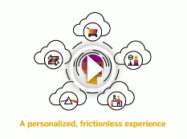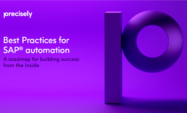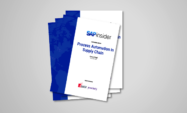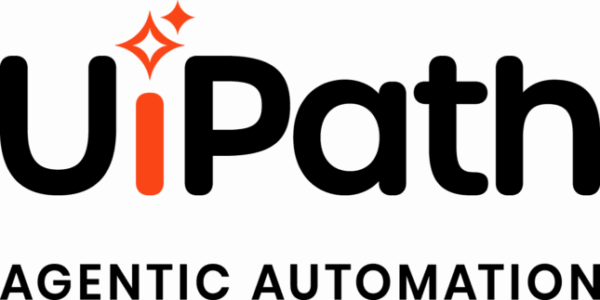SAP Process Automation
Filter By
Browse By
- SAP Analytics and AI
- SAP Application Development and Integration
- All SAP Application Development and Integration
- SAP ABAP
- SAP ABAP Development Tools
- SAP ABAP Test Cockpit
- SAP API Management
- SAP BAPI
- SAP Basis
- SAP BRF
- SAP Business Application Studio
- SAP CMS
- SAP Design Studio
- SAP Development Tools
- SAP DevOps
- SAP EAI
- SAP EDI
- SAP Extension Suite
- SAP Fiori
- SAP Fiori Elements
- SAP Integration Suite
- SAP Low Code Application Development
- SAP Low Code Automation
- SAP Netweaver
- SAP Release Management
- SAP UI5
- SAP Web Application Server
- SAP Web IDE
- SAP Business Process Management
- SAP Center of Excellence
- SAP CIO
- SAP Customer Experience
- SAP Data and Data Management
- All SAP Data and Data Management
- SAP BW
- SAP BW/4HANA
- SAP Crystal Reports
- SAP Data Archiving
- SAP Data Center
- SAP Data Governance
- SAP Data Integration
- SAP Data Migration
- SAP Data Quality
- SAP Data Services
- SAP Data Strategy
- SAP Data Visualization
- SAP Data Warehouse Cloud
- SAP DMS
- SAP Document Control
- SAP EIM
- SAP ETL
- SAP ETL Tools
- SAP HANA
- SAP HANA Administration
- SAP HANA Deployment Infrastructure
- SAP HANA Studio
- SAP Master Data
- SAP Master Data Governance
- SAP MDM
- SAP Enterprise Architect
- SAP Enterprise Asset Management
- SAP ERP
- SAP Finance
- All SAP Finance
- SAP Accounting
- SAP AR AP
- SAP Asset Accounting
- SAP Billing Systems
- SAP BPC
- SAP BRIM
- SAP Cash Management
- SAP Central Finance
- SAP Controlling
- SAP COPA
- SAP Cost Center Accounting
- SAP Currency Risk
- SAP e-invoicing
- SAP FICO
- SAP Finance Automation
- SAP Advanced Financial Closing
- SAP Financial Consolidation
- SAP Financial Planning
- SAP FX Risk
- SAP General Ledger
- SAP Global Tax Management
- SAP Hyperion
- SAP Order to Cash
- SAP Payment Processing
- SAP Profitability Analysis
- SAP Rebate Management
- SAP S/4HANA Finance
- SAP SWIFT Compliance
- SAP Treasury Management
- SAP Universal Journal
- SAP Governance Risk and Compliance
- SAP Human Capital Management
- SAP Intelligent Technologies
- SAP Platform and Technology
- All SAP Platform and Technology
- SAP Business Technology Platform
- SAP Cloud
- SAP Cloud Connector
- SAP Cloud Integration Platform
- SAP Cloud Migration
- SAP Cloud Platform
- SAP Cloud Providers
- SAP Cloud Strategy
- SAP Digital Signature
- SAP Container Platform
- SAP HANA Enterprise Cloud
- SAP Digital Asset Management
- SAP Smart Forms
- SAP HEC
- SAP Digital Integration Hub
- SAP Hyperscalers
- SAP Infrastructure
- SAP Messaging
- SAP Quality and Testing
- SAP Security
- SAP Spend Management
- SAP Supply Chain Management
- All SAP Supply Chain Management
- SAP APO
- SAP Asset Management
- SAP Business Network
- SAP Digital Manufacturing Cloud
- SAP Digital Twin
- SAP EWM
- SAP IBP
- SAP Inventory Management
- SAP Label Printing
- SAP Logistics
- SAP Manufacturing
- SAP Manufacturing Automation
- SAP MES
- SAP MII
- SAP MM
- SAP MRO
- SAP MRP
- SAP Order Management
- SAP Plant Maintenance
- SAP PLM
- SAP Production Planning
- SAP S&OP
- SAP SD
- SAP SPM
- SAP Supply Chain Planning
- SAP Track and Trace
- SAP Transportation Management
- SAP System Administration
Process Automation as a Strategic Tool in the SAP S/4HANA Environment
Business processes form the backbone of how enterprises run and their level of efficiency. Efficiently managing these processes has many different aspects, and these aspects include improving process efficiency, quality, and design. The advent of process automation tools, which often encompass all three key aspects mentioned above, are increasingly popular and becoming an integral part of the portfolio of digital transformation tools that organizations leverage.
Process Automation as a Strategic Tool in the SAP S/4HANA Environment
Business processes form the backbone of how enterprises run and their level of efficiency. Efficiently managing these processes has many different aspects, and these aspects include improving process efficiency, quality, and design. The advent of process automation tools, which often encompass all three key aspects mentioned above, are increasingly popular and becoming an integral part of the portfolio of digital transformation tools that organizations leverage.
What Is Process Automation?
At a high level, process automation combines data mining, process intelligence, workflow automation, and advanced analytics to discover, validate, and improve business process workflows and tasks. Combining these into a process automation platform, companies mine log data from their systems and leverage analytics on this data to understand their processes, identify process bottlenecks, and generate additional insights. This latter part is process intelligence. Business applications, like ERP, generate an audit log of processes within their various modules. Process mining leverages these logs to build a model or flow of the process. This model can then be analyzed further for insights. Best-of-breed tools have algorithms and visualizations that not only allow users to see what happened, but also provide the tools to optimize these processes.
Criticality of SAP S/4HANA Investment
One top of mind question of technology executives, irrespective of where they are in their SAP S/4HANA journey, is how to maximize the value from their SAP S/4HANA investment? This value aspect has several components, ranging from seamless migration to post-implementation adoption and optimal usage. A key aspect of all of these components, however, is the underlying business processes. SAPinsider S/4HANA Migration Benchmark Report 2021 highlights that 48% of respondents believe that adopting best-practice business process models is the most important strategy to address drivers for SAP S/4HANA migration.
How Tools Like Process Mining and Intelligence Can Help in SAP S/4HANA Migration
The key to any successful transformation always starts with understanding the current state. And process mining solutions start playing their role at this stage, allowing you to gain a detailed understanding of the current state of your IT systems.
These insights can help organizations not only decrease their SAP S/4HANA implementation cycle, but also help manage their processes in a more optimal way post-implementation. Overall, they help minimize implementation risks as well. Benefits that these solutions generate within the SAP S/4HANA migration context include:
- Generate an accurate business value assessment for SAP S/4HANA migration through 360-degree process visibility and often artificial intelligence-enabled fit-gap analysis.
- Mitigate project risk and cost by supporting the SAP S/4HANA migration journey across all phases. This includes safeguarding the transformation post-migration through continuous process improvement.
88 results
-

Optimize and automate business processes with SAP Integration Suite
Reading time: 1 min
Many organizations are faced with the challenge of creating harmonized experiences across multiple applications and systems. Discover how integration can help address this challenge by optimizing and automating business processes. Read more…
-

Fraud in Accounts Payable: Fake Invoices, Real Threat
Reading time: 1 mins
Accounts payable fraud is a common type of deceit that targets an organization’s accounts payable department, which is responsible for making payments to suppliers and other vendors. The impact of AP fraud on an organization can be extremely detrimental due to the scope and amount of money involved. In fact, according to a recent report…
-

Future of the Digital CFO
Reading time: 1 mins
The era of digital acceleration is here, and finance’s role in this seismic shift is beginning to become clearer. In just the last five years, the number of financial leaders responsible for their companies’ digital activities has more than tripled. However, digital adoption alone is not a silver bullet. COVID’s initial shock forced many organizations…
-
-

How Honda Used Automation to Improve SAP Change
Reading time: 1 mins
Read this case study to learn how Honda Europe achieved a more efficient, transparent, and automated change management process that provides the required levels of flexibility and control.
-

John Deere Uses Devops Automation Tool to Achieve an Agile SAP Transformation
Reading time: 1 min
The need to deliver more value to customers in faster cycles is driving agile transformation. Applying industry-leading agile and DevOps practices is critical to transformation success. Learn how John Deere team is driving value from agile development, CI/CD pipelines, and a DevOps mindset across their SAP ecosystem.
-

Automate or Fail: Why Automation is Key to the Survival of IT in a Digital World
Reading time: 1 mins
Businesses run on people, and people rely on mission-critical IT applications for the smooth running of everything from finance and payroll systems, through to supply chains and factory floors. During 2020, the resilience of IT operations was truly put to the test. While many organisation had business continuity plans in place, most assumed scenarios such…
-

Best Practices for SAP® Automation
Reading time: 1 min
Every successful digitization initiative starts with a plan and a map to align people, processes, and technology—whether you’re optimizing a single process in your department or looking to make a more significant impact across your organization. But those plans don’t always come to fruition, whether because they were trying to tackle too much or are...…
-
-

5 Things You Need to Know about Applying RPA to SAP Business Processes
November 21, 2022
Robotic Process Automation (RPA) releases employees from repetitive tasks and allows them to focus on activities that add higher value to business and create better sense of fulfillment for talent. This session will provide an overview of SAP-enabled intelligent automation for enterprise, diving into RPA basics, evolution of SAP RPA products, and most importantly SAP…
-

Integrating and Automating Your Business to the Next Level
Reading time: 1 mins
At SAPinsider’s EMEA event in Vienna, Red Hat Senior Principal Product Manager for SAP Arne Arnold offered insights on automation and integration. In this session on day three of the event, Arnold shared expertise on the Red Hat Enterprise Linux solution and explained how to maximize the value of your SAP environment using RHEL.
-

- SAP Process Automation
 Premium
Premium
Process Automation in Supply Chain APAC Derivative
Reading time: 2 mins
Process automation technologies have increasingly evolved into strategic solutions during the last few years. In their responses to the SAPinsider Process Automation and SAP S/4HANA research conducted in April 2022, SAPinsiders highlighted the supply chain as one of the top focus functions for process automation. To explore this focus further, we surveyed 106 members of…
Become a Member
Unlimited access to thousands of resources for SAP-specific expertise that can only be found here.
Become a Partner
Access exclusive SAP insights, expert marketing strategies, and high-value services including research reports, webinars, and buyers' guides, all designed to boost your campaign ROI by up to 50% within the SAP ecosystem.
Upcoming Events
Related Vendors
Your request has been successfully sent


